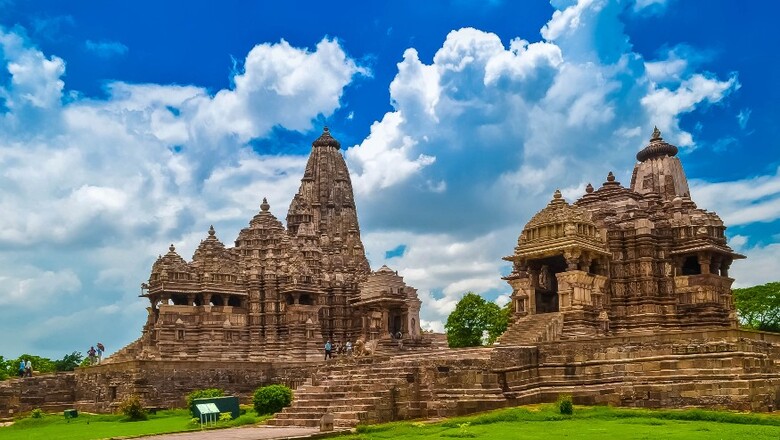
views
India is home to several heritage sites, from Taj Mahal in Agra to Qutub Minar in Delhi. These monuments are a testament of India’s rich culture and heritage. Another such monument, which is situated in the heart of India, happens to be the Khajuraho Temples.
A UNESCO (United Nations Educational, Scientific and Cultural Organization) World Heritage Site, Khajuraho temples are primarily famous for their erotic sculptures and are dubbed as Kama Sutra temples. However, the temples are more than that. So let us take a look at some of the fascinating facts of this heritage monument:
Interesting facts about Khajuraho Temples
Located in Madhya Pradesh, about 175 kilometres south-east of Jhansi, the temples are relatively isolated today and were situated over 56 kilometres from their capital, Mahoba, in their heyday as well. However, it was due to this fact that no doubt contributed to their forgotten era when Turkic invaders seized the kingdom in the 13th century. It was rediscovered by a British army Captain, TS Burt in the 1830s.
The structures of the temple are carved from a sandstone that lay buried on the banks of the River Ken, and must have required immense levels of capital and labour to move.
Dedicated to two religions, Hinduism and Jainism, Khajuraho Temples have just 10 percent of its carvings dedicated to erotic creative expressions. The rest 90 percent, that most people are unaware of, showcase the life of the common people who lived during the Chandela Dynasty’s golden age between the 10th and 11th centuries. There are sculptures of potters, musicians, farmers, and women, but no one talks about those carvings.
Khajuraho were originally a part of a larger complex of around 85 buildings, out of which only a group of around 20 structures remain. These structures are scattered over a 23 square kilometre area, these stunning monuments offer a glimpse into the history, antiquity, mystery, and isolation in a remote region of today’s India.
The temples are named after a ‘date palm bearer.’ Khajur is Hindi for date palm and it is said once the city was surrounded by date palm trees and that is how it got its name.
Read all the Latest Lifestyle News and Breaking News here


















Comments
0 comment